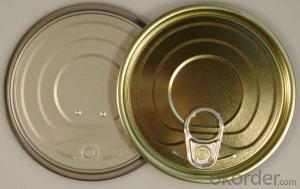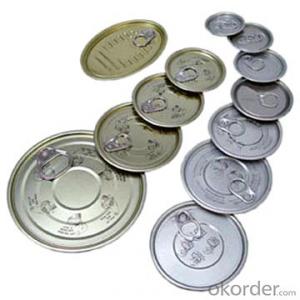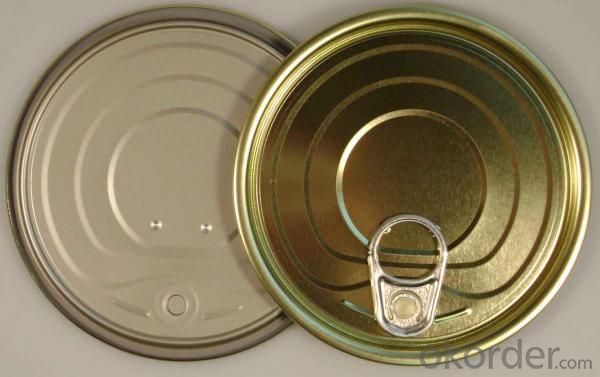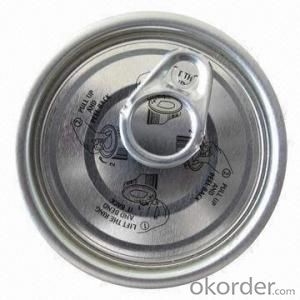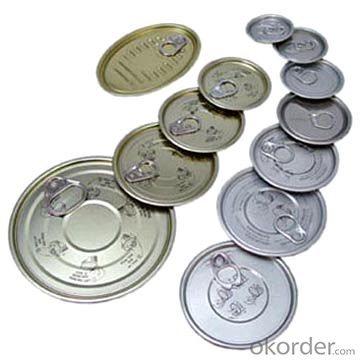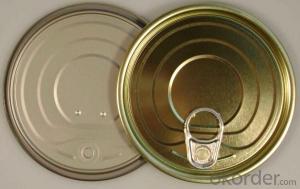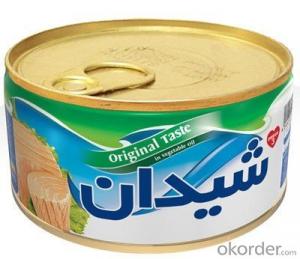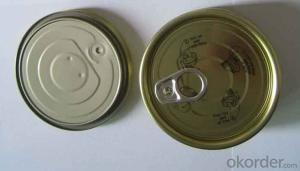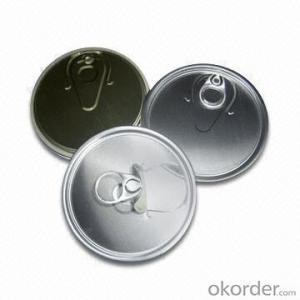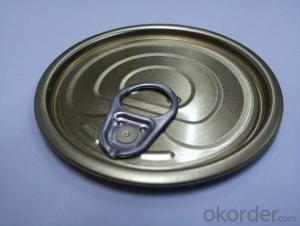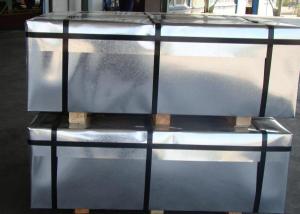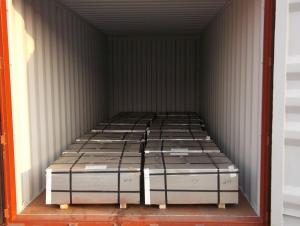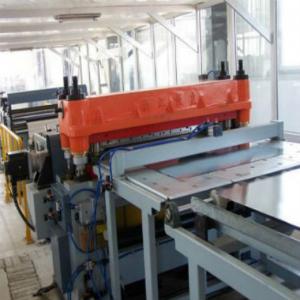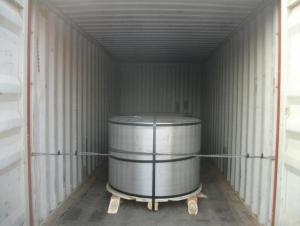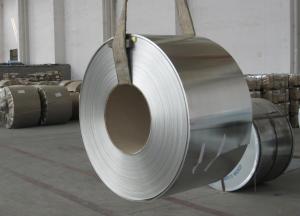Food Usage Easy Open End, Tinplate Material 300#
- Loading Port:
- China main port
- Payment Terms:
- TT OR LC
- Min Order Qty:
- 100000 pc
- Supply Capability:
- 10000000 pc/month
OKorder Service Pledge
OKorder Financial Service
You Might Also Like
Specification
Brief Details
Metal Type: Tinplate
Use: Canned Food
Model Number: 300#
Name: Tin can easy open ends
Item No.: 300#
Size(mm): 72.9mm
Inner coating: White porcelain
Shape: Round
Usage: For canned foods
Feature: Full open
Type: Can lid
Specifications
Name | 73mm easy open end |
Item No. | 300# |
Shape/type | Round |
Size(mm) | Dia72.9 |
Coating | White porcelain |
Material | Tinplate |
Pcs/20 GP’ | 1,680,000 Customize packing: as clients’ requests. |
Features | 1.Used for packaging of tomato paste,jam,salad…etc. 2.Have illustration printing on the lid 3.Coating can be according to the customer required. |
Our Workshop
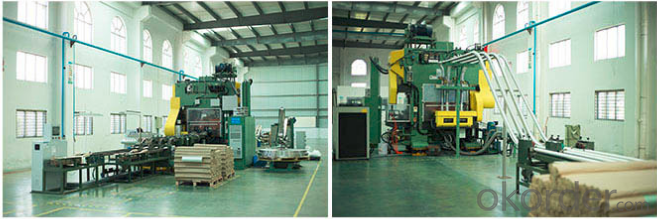
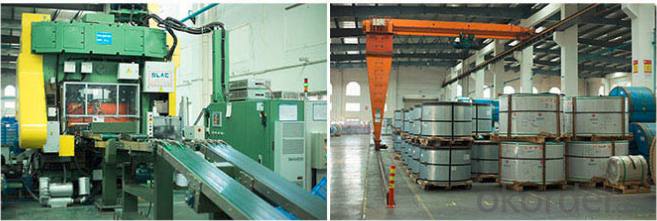
Our packing
We could offer package as customers require, by carton or by wooden pallet.
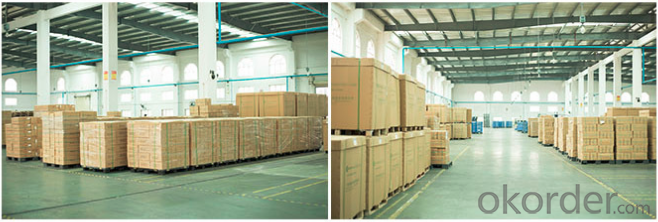
FAQ
1.Q: What is the material ?
Both tinplate and aluminum material, our raw material is purchase from large steel company.
2. Q: What is monthly output?
about 10000,000 per month
3.Q:Could you offer samples for our testing?
YES, of course.
4. Q:Can you make new mold with customized size?
YES, we can, but the quantity should meet our requirement.
5. Q: Payment term you accept:
TT, LC, DP, etc., this could be negotiable.
- Q: What kind of material is tinplate?
- This past China lamp tin plate made of kerosene, shaped like a horse, so called "tin". The name "tinplate" is not exact. Therefore, in 1973, when the Chinese tin plate meeting was called "tinplate", the official document no longer used the name "tinplate".
- Q: How does tinplate contribute to the overall portability of packaging?
- Tinplate contributes to the overall portability of packaging due to its lightweight nature and high strength-to-weight ratio. It allows for the creation of sturdy, yet lightweight packaging solutions, making it easier to handle, transport, and carry products.
- Q: What are the main challenges in tinplate warehousing?
- The main challenges in tinplate warehousing include ensuring proper inventory management, maintaining product quality and integrity, optimizing space utilization, managing complex logistics, and adhering to stringent safety and regulatory requirements.
- Q: What is the average lifespan of tinplate products?
- The average lifespan of tinplate products can vary depending on several factors, such as the quality of the tinplate used, the conditions in which the products are stored and used, and how well they are maintained. Generally, tinplate products can last for several years to a decade or more if properly cared for.
- Q: How does tinplate packaging contribute to product protection against pests?
- Tinplate packaging provides a sturdy and durable barrier that helps protect products against pests. Its tight seal and resistance to punctures and tears prevent pests, such as insects and rodents, from accessing the packaged goods. Additionally, tinplate's non-toxic nature and impermeability to moisture and air also discourage pests, as they are unable to detect or reach the contents within. Overall, tinplate packaging plays a vital role in safeguarding products from pest infestation, ensuring their quality and integrity.
- Q: What are the different printing methods used on tinplate?
- There are several different printing methods used on tinplate, including lithography, screen printing, and digital printing. These methods allow for high-quality and detailed designs to be printed onto tinplate surfaces, making them ideal for packaging and decorative applications.
- Q: How to quickly open the bottle?
- A tin can be opened, the handle is separated, and the canned fruit can be clamped by the head, and the rotating knob and the tin can be opened. Remember, when you turn the knob, you can only rotate clockwise and turn counterclockwise clockwise.
- Q: How is tinplate coated for signage?
- Tinplate for signage is typically coated through a process known as electroplating, where a thin layer of metal, such as tin or chromium, is deposited onto the surface of the tinplate. This coating not only enhances the visual appeal of the signage but also provides protection against corrosion and improves its durability.
- Q: What are the safety considerations when handling tinplate?
- When handling tinplate, it is essential to consider several safety measures. First, tinplate can have sharp edges, so wearing gloves and using appropriate tools is important to avoid cuts or injuries. Secondly, tinplate is often coated with various substances, such as lacquer or resin, which may contain harmful chemicals. Therefore, it is crucial to handle tinplate in well-ventilated areas and wear protective equipment like goggles and masks to minimize exposure. Additionally, tinplate can be heavy and bulky, so proper lifting techniques should be employed to prevent strains or back injuries. Lastly, storing tinplate in a dry and clean area can help prevent corrosion and maintain its structural integrity.
- Q: What are the advantages of using tinplate for medical packaging?
- There are several advantages of using tinplate for medical packaging. Firstly, tinplate is highly durable and provides excellent protection to the packaged medical products. It is resistant to corrosion, ensuring the integrity and safety of the contents. Secondly, tinplate is lightweight yet sturdy, making it easy to handle and transport. This reduces shipping costs and prevents damage during transit. Additionally, tinplate is impermeable to moisture, oxygen, and light, providing a high level of product protection and extending the shelf life of medical supplies. Lastly, tinplate is recyclable and has a low environmental impact, making it a sustainable choice for medical packaging.
Send your message to us
Food Usage Easy Open End, Tinplate Material 300#
- Loading Port:
- China main port
- Payment Terms:
- TT OR LC
- Min Order Qty:
- 100000 pc
- Supply Capability:
- 10000000 pc/month
OKorder Service Pledge
OKorder Financial Service
Similar products
Hot products
Hot Searches
Related keywords
